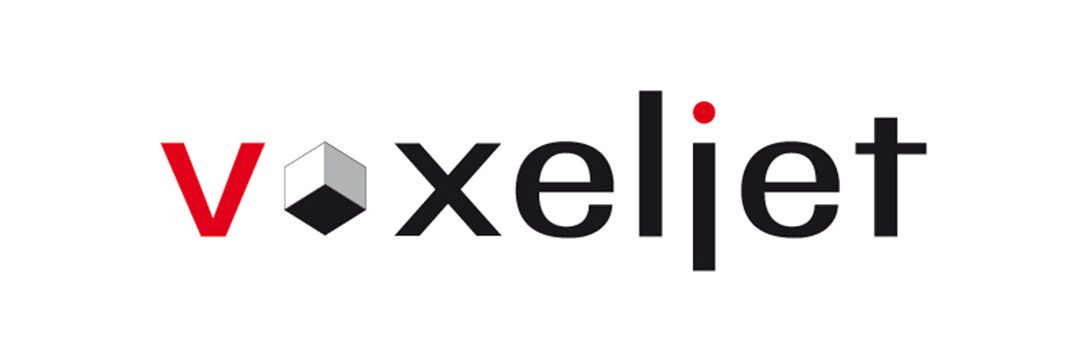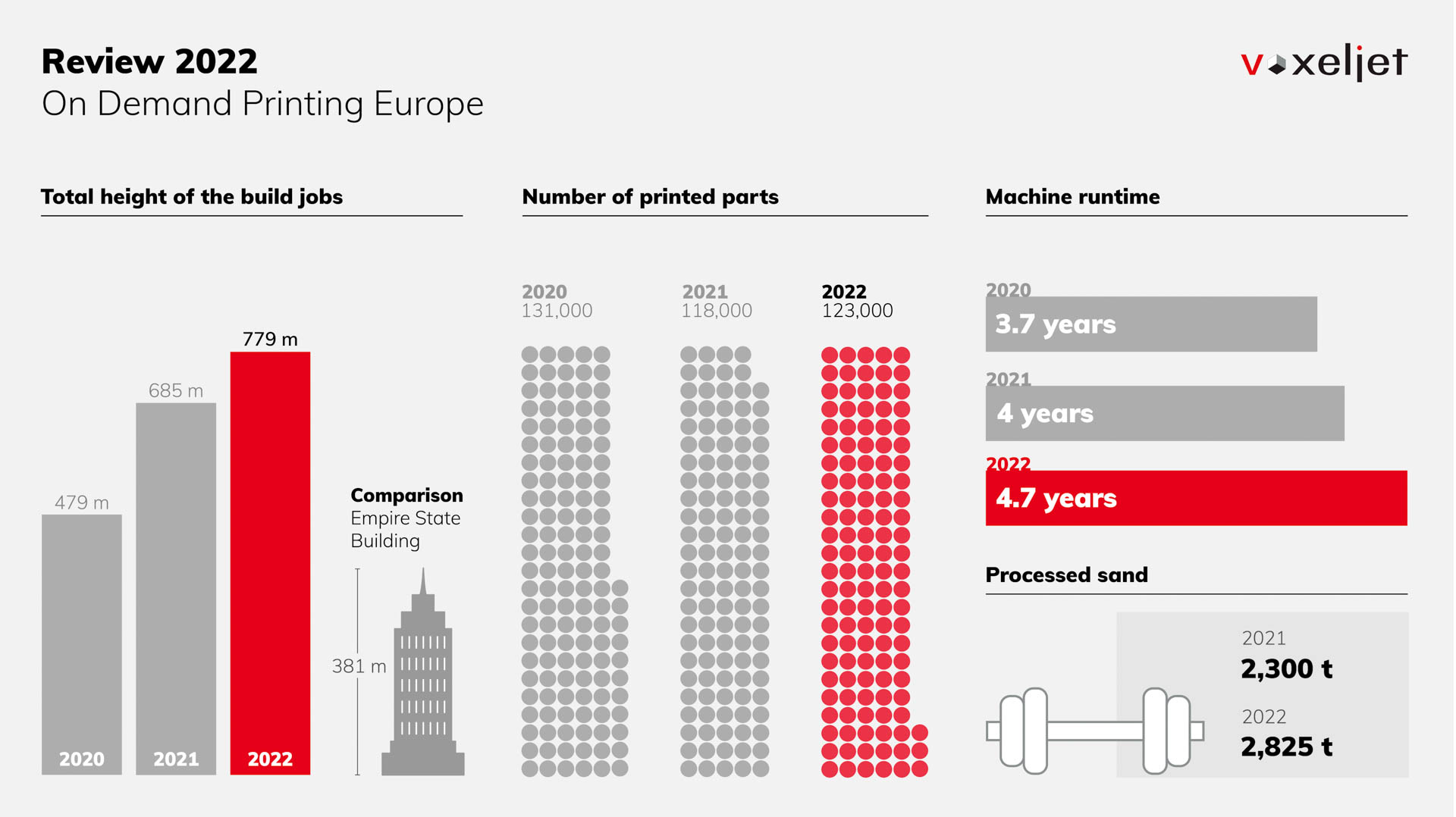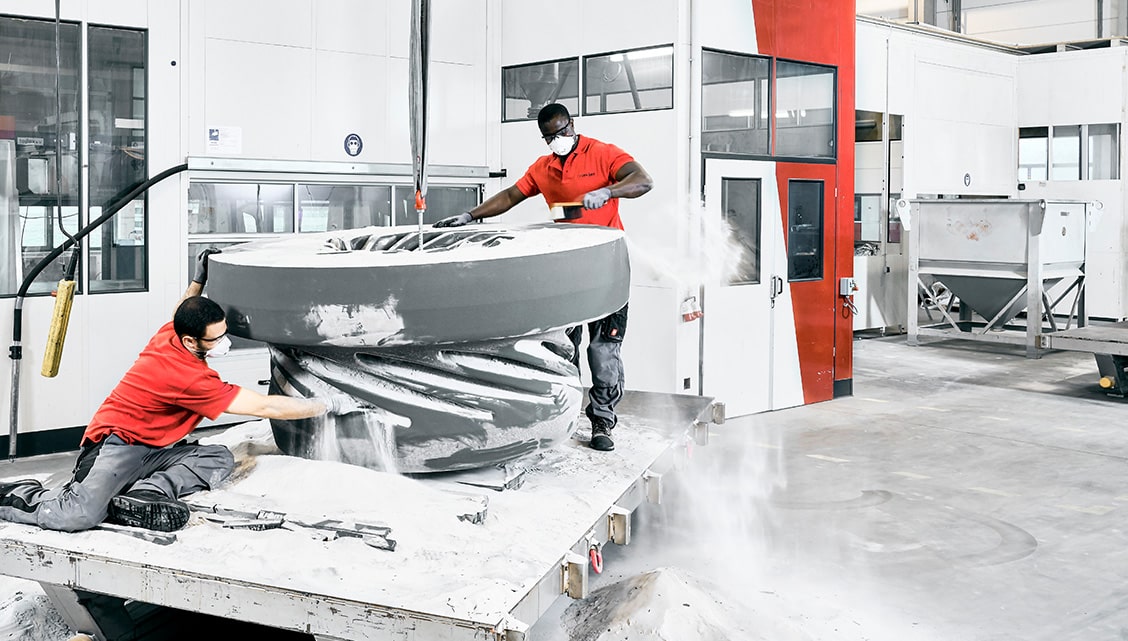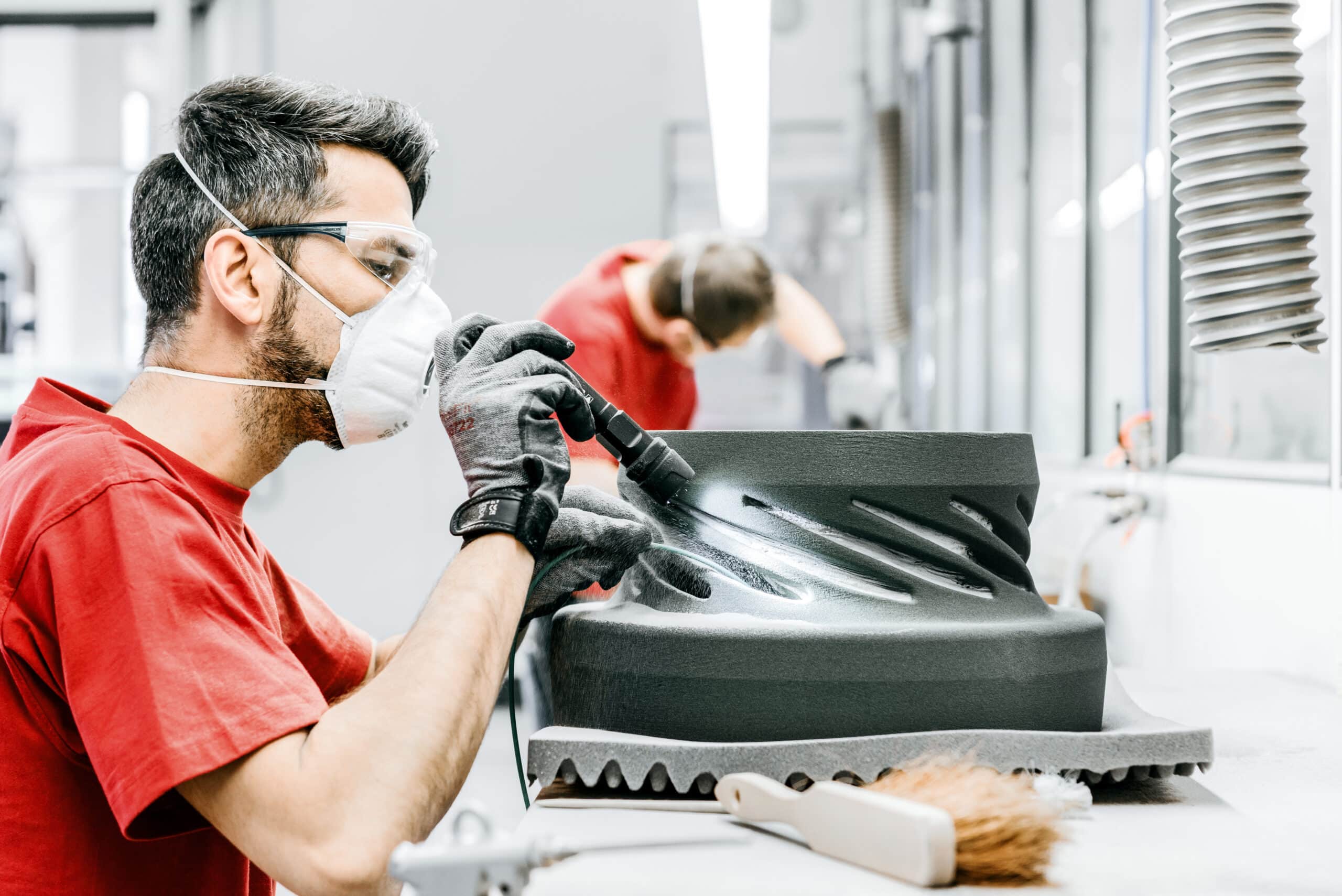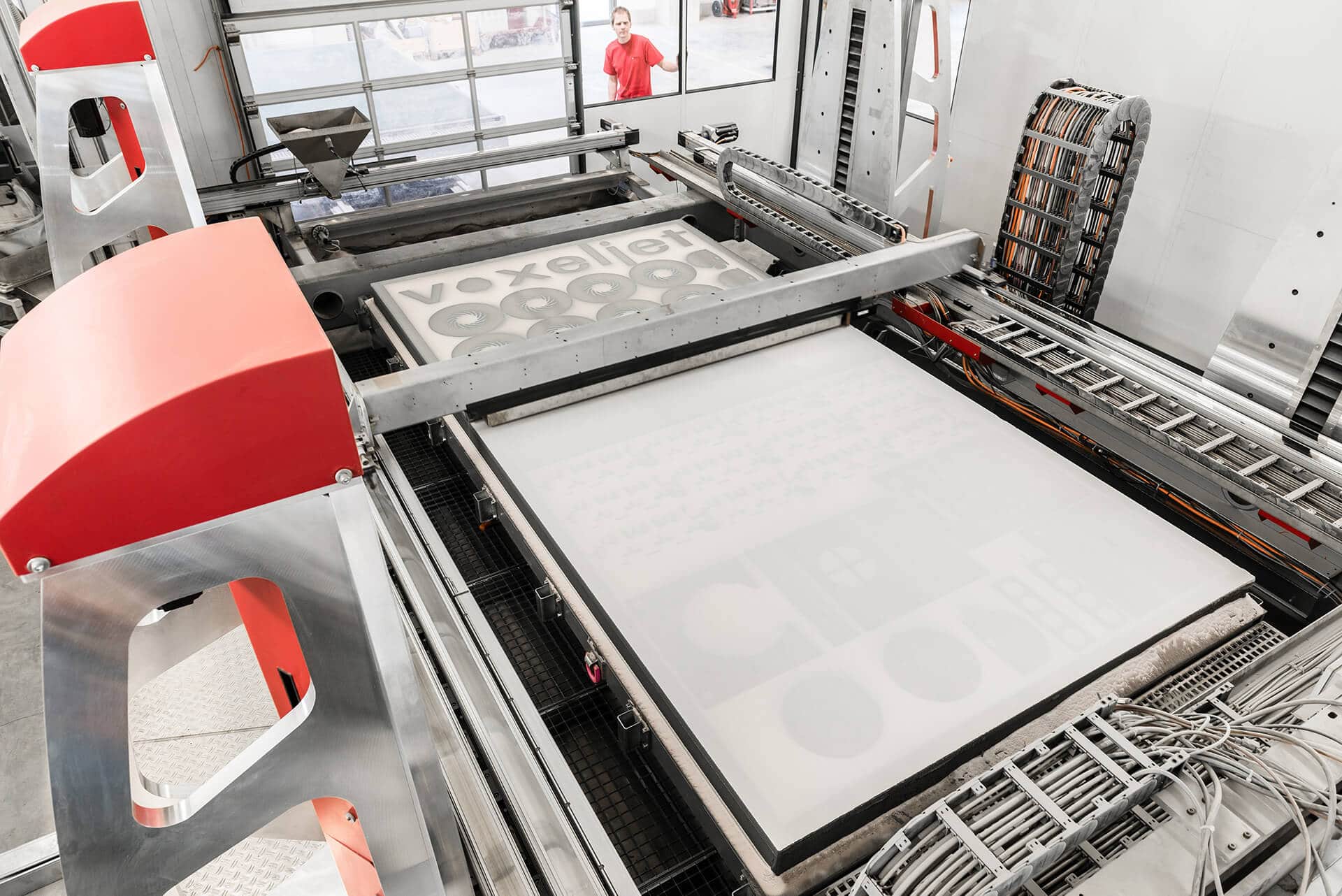- Home
- Press releases
- Increasing efficiency in on demand 3d printing
ReviewOn Demand Production2023
The past few years have been challenging, with a number of crises, such as supply bottlenecks and geopolitical conflicts. As a technology company in a highly competitive market environment, we have faced these head-on. We have not been spared, but we have achieved the best consolidated result in our company’s history in the 2023 financial year.
And this is despite our on-demand production data showing a 25% reduction in printed parts, a 41% decrease in machine hours, and an 18.5% decline in build height compared to the previous year. This apparent contradiction speaks volumes about the trends and developments we recognize in the market, and it makes us optimistic about the future. 3D printing is a real production medium and is developing into a new standard in all areas of application. It is worth taking a closer look.
Factor Size
In comparison to previous years, we observed a significant decrease of 25% in printed components in 2023, reflecting a notable decline in overall production volume. However, the reasons behind this trend are largely positive, particularly for our 3D printing technology. The industry is increasingly shifting towards larger-scale components, which aligns favorably with our Binder Jetting technology. Under the umbrella term ‘Gigacastings,’ we have seen a growing number of orders, both in the past year and ongoing, specifically targeting the 3D printing of large-scale forms, such as structural components in the automotive sector.
In automotive manufacturing, there is a rising trend towards component consolidation, wherein parts previously cast and assembled separately are now cast in a single piece. This shift translates to reduced tooling costs, assembly efforts, and consequently, noticeable reductions in overall costs for our clientele. We, too, benefit from large-scale components as they enhance our machine utilization, referring to the ratio between printed and non-printed material. They allow for optimized nesting within the job box, thereby reducing sand consumption and our own operational costs overall.
Factor Quantity
Beyond the size of components, there is another development that addresses the scalability of Binder Jetting perfectly: batch sizes are increasing. Trust in 3D printing is growing, and our clientele is recognizing more and more application potentials, leading to the development of components explicitly intended to be created via additive manufacturing.
Depending on the quantity, 3D printing is often still more expensive than conventional manufacturing technologies. However, the benefits of optimized components increasingly outweigh these higher costs. We see this, for instance, with a customer who now orders several thousand casting cores per quarter, despite them being more expensive than traditionally shot cores.
Yet, the benefits of the cast parts produced via 3D printing significantly surpass those of conventionally manufactured ones. This is primarily because 3D printing enables the production of functionally optimized components. They become more durable, stiffer, lighter, and much more—depending on the function for which they are designed. For our clientele, superior products become compelling selling points to convince their own customers. Additionally, there are significant savings potential for tooling and inventory costs. Consumers, in turn, can enjoy optimized and more reliable products, along with reduced maintenance costs.
Factor People and Technology
Last but not least, our employees have arguably the greatest share in this business result. Their expertise in handling and cleaning components, optimized planning and preparation driven by long-term and large-volume production orders, as well as improved maintenance and care of the machines, significantly contribute to the enhanced business outcome.
They are also responsible for the advancement and reliability of our 3D printers. Over the years and decades, we have continuously improved our process technologies and learned to enhance our quality. The technologies we require for the construction of our machines are also constantly evolving. Print head technology becomes more precise and durable, materials become better and more efficient, resulting in higher machine availability, reduced waste, such as in the cleaning of printed components, and consequently, fewer reprints.
Conclusion
Perhaps additive manufacturing is no longer in the spotlight as much as it was a few years ago. Today, that honor belongs to new technologies like artificial intelligence. However, this is just one argument indicating that additive manufacturing has reached a level of productivity where the focus is no longer solely on creating new and unique developments, but on delivering clear benefits to ensure competitive advantages and better products for businesses and end-users.
Additive manufacturing is on its way to becoming a ‘standard,’ and standards are rarely celebrated. This is a positive development because it demonstrates that the technology is firmly entrenched in the minds of designers and product development processes. The trend towards higher quantities and broader applications confirms this. And it is precisely these developments that make us optimistic and led to 2023 being the most profitable year in our company’s history.
Press contact
Frederik von Saldern
Tel.: +49 821 7483-447
Mail: [email protected]
3D printing of recyclable processed construction waste for mold making
voxeljet and Parastruct have successfully used binder jetting 3D printing to investigate the processing of recycled, biogenic, and mineral waste materials from the construction industry in an initial proof of concept.
